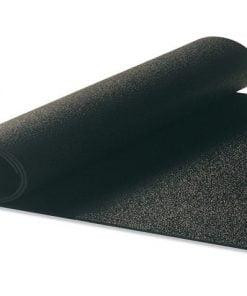In workplaces where electronic components are handled, the risk of electrostatic discharge (ESD) is a constant concern. ESD flooring and bench matting are critical in mitigating this risk, ensuring both safety and efficiency. This article explores their role in the modern workplace.
Understanding Electrostatic Discharge (ESD)
ESD occurs when a sudden flow of electricity between two electrically charged objects is caused by contact or an electrical short. In workplaces dealing with sensitive electronic equipment, an uncontrolled ESD can damage components or lead to malfunctions, resulting in financial losses and safety hazards.
The Significance of ESD Flooring
ESD flooring is designed to control static electricity. It works by providing a conductive or dissipative path for the electrostatic charge to be grounded safely. This flooring is essential in environments like electronic manufacturing facilities, laboratories, and server rooms, where static control is crucial. Beyond protecting equipment, ESD flooring also safeguards employees from potential electric shock.
Types of ESD Flooring
There are various types of ESD flooring, each suited to different needs. Vinyl and rubber are popular choices due to their durability and static control properties. These materials can be tailored to specific resistance requirements, ensuring optimal protection for different work environments.
ESD Bench Matting: A Critical Component
Alongside ESD flooring, ESD bench matting plays a vital role in static control at workstations. These mats are placed on workbenches where electronic components are assembled or repaired. Like ESD flooring, they are designed to dissipate static charges, thus protecting both the worker and the electronic components they handle.
Installation and Maintenance
Proper installation and maintenance of ESD flooring and bench matting are critical to their effectiveness. It includes ensuring a proper grounding system and regular cleaning with specific ESD cleaners to maintain their static control properties. Regular testing and monitoring are also essential to ensure they continue to meet the required safety standards.
The Impact on Workplace Safety and Efficiency
The use of ESD flooring and bench matting impacts workplace safety by reducing the risk of accidental electrostatic discharges. It not only protects employees but also reduces the incidence of equipment damage. Additionally, by safeguarding sensitive components, these ESD control systems contribute to maintaining efficiency and productivity in the workplace.
Anti-static flooring and matting are indispensable in environments where electronic components are handled. By effectively managing static electricity, they play a crucial role in ensuring workplace safety and maintaining operational efficiency. Investing in quality ESD control systems is a proactive step towards safeguarding both personnel and equipment, ultimately contributing to a more productive and safe working environment.
Final Thoughts
As technology continues to advance and workplaces become increasingly reliant on electronic components, the importance of ESD safety measures becomes ever more paramount. ESD flooring and bench matting are not just safety measures; they are investments in the future of technology-driven workplaces.
Anti-Static ESD specializes in providing comprehensive ESD solutions, offering a wide range of products, including ESD shielding bags, mats, coats, jackets, and other ESD accessories. With a commitment to delivering quality and expert advice, they cater to various industries needing static control solutions. Their focus on customer satisfaction and providing tailored solutions makes them a go-to source for businesses seeking reliable and effective ESD protection to ensure workplace safety and efficiency in handling sensitive electronic components.
Source Url:-https://sites.google.com/view/antistaticesdcom0134/home





Comments